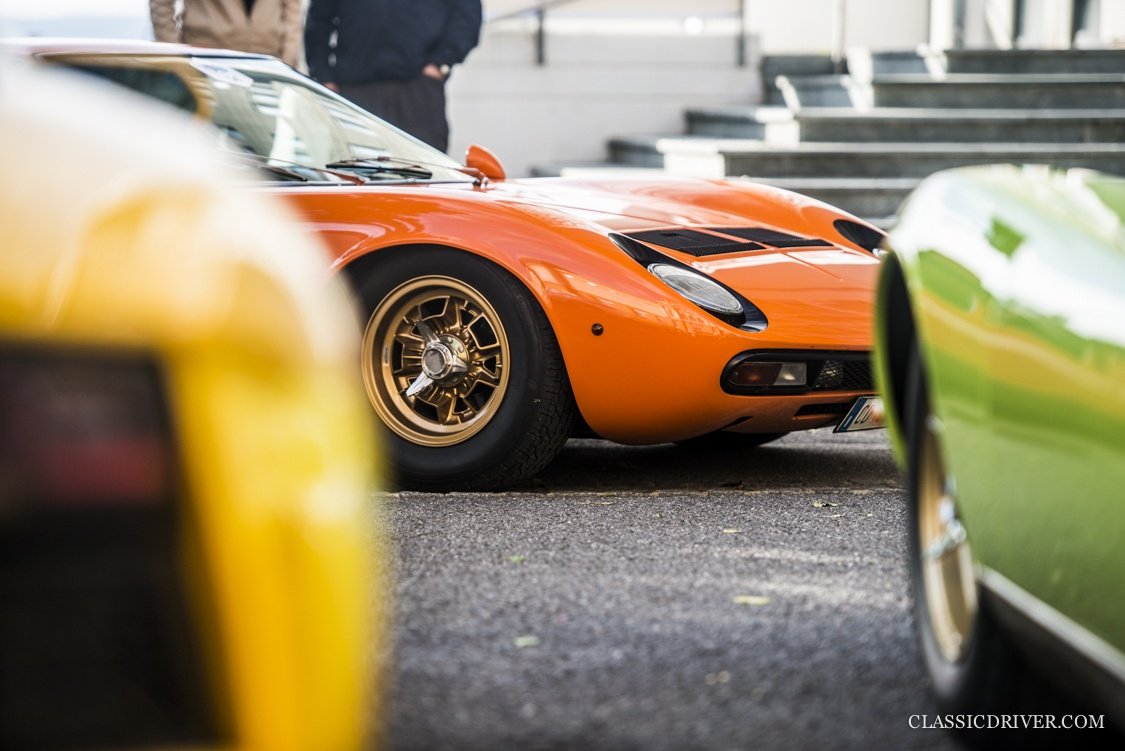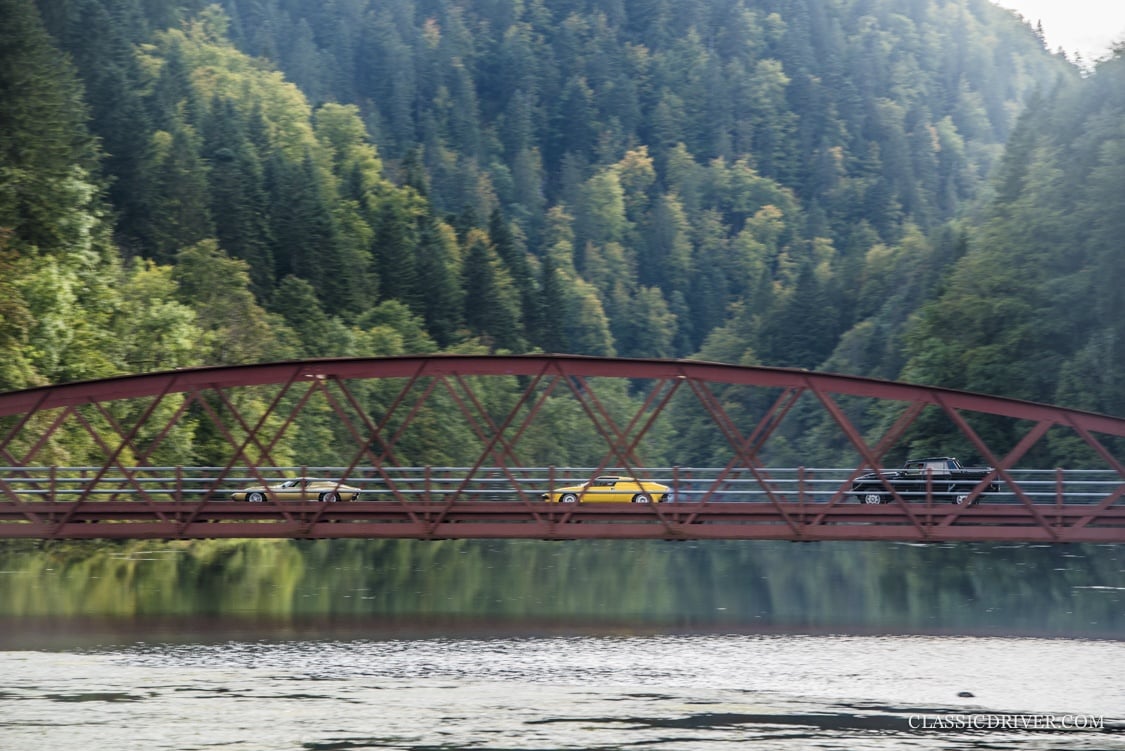The architect and the bulls



It’s well known that the Swiss-French architect and designer Charles-Édouard Jeanneret-Gris — better known as ‘Le Corbusier’ — was enthusiastic about technical functionalities and perfectly balanced proportions. “The house is a machine for living, and an armchair is a machine for sitting,” he used to say. He was also interested in the automobiles of the modern age. In 1936, he drew a mass-efficient small car, while his personal means of transport was a luxurious Voisin C7. But what would the man with the round spectacles and bow tie have thought about the sports cars of Lamborghini? Would he have praised his professional colleague Marcello Gandini — who, as a designer for Bertone, penned the most important of the brand’s models — for his aesthetically radical yet functional designs? Would the claustrophobic and cramped interior of the Countach have been compatible with his ‘Modulor’ scale of proportions? And as the declared enemy of ornamentation, how would Le Corbusier have commented on the excessive spoilers that graced most Lamborghinis of the 1980s and ’90s?
Lessons in design history


The fact that such theoretical questions of aesthetics were actually passionately discussed at an automobile meeting is one of the greatest achievements of the first Lamborghini Concorso d’Eleganza, which took place last weekend in the Swiss city of Neuchâtel. Following the footsteps of Le Corbusier to his birthplace of La Chaux-de-Fonds, where two of his earliest buildings, Maison Blanc and Villa Turque, could be visited, the finest of Lamborghinis could be found throughout the fields, including some 60 models — from the wonderful 1963 Lamborghini 350 GT prototype to contemporary supercars such as the Veneno Roadster. Not to mention the opportunity to see 18 Miuras drumming across the wet mountain roads, following five variations of the wedge-shaped Countach, or to admire four colossal LM002s in formation. It’s not until you’re apart of such a monothematic concours that you realise that even small details make a big difference — and we’re grateful to Lamborghini Polo Storico and the participants for providing us with this unforgettable lesson in Italian design history.
Pasture of the super bulls



The jury, comprised of both enthusiasts and champions of motorsport, including Alain de Cadenet, Corrado Lopresto, Hidemoto Kimura, and Olivier Namèche, were keen to highlight the most beautiful examples and those with the most distinguished histories in each class. The Best in Class prize for the first generation of the Lamborghini Miura, the P400, was awarded to a 1967 frog green example with Italian provenance. And within the Miura S class, a wonderful, freshly restored example in the unique colour of ‘English Green’, which had once belonged to a Paris jeweller, was awarded the top prize — a well-deserved victory. However, the most spectacular Miura in the concours would have to have been a green-and-gold SV from 1971, which had been flown to Neuchâtel by its Japanese owner, who was proud of not only the victory in his class but also being awarded the coveted title of ‘Best of Show’. Among the class of Lamborghini Espadas, which will celebrate their 50th birthday in 2018, a silver-blue second-series example with a chocolate-brown interior won the jury over.
Miura, Miura, Miura



In the meantime, the front-engined models from Sant’Agata, such as the sought-after 350 GT and 400 GT and less-desirable Jarama, strangely competed against each other in their own class. And a decade of eight-cylinder bulls was also represented — but against the elegant green 1972 Urraco, how could the idiosyncratic Jalpas compete? From the Countach class, the jury chose not the purist LP400 ‘Periscopio’ or the 25th anniversary model formerly owned by Canadian oil-tycoon Walter Wolf, but a right-hand-drive QV that was driven to Neuchâtel from the UK for the class victory. From the next generation of super bulls, a metallic lilac Diablo Roadster VT from 1995 fended off the rest, while in a class for contemporary specials, a Veneno Roadster claimed victory against, admittedly, lesser competition.
Through all the decades



However, the real star of the concours was an absolute one-of-a-kind, mythical gem. After years of extensive restoration and reconstruction, exceptional Swiss collector Albert Spiess presented his Lamborghini Marzal for the very first time. Designed by Marcello Gandini, the car had been on display at the Geneva Motor Show in 1967, just three years after the launch of the elegant 350 GT, and featured a completely new and radically futuristic design language that changed Sant’Agata for good — one that would go on to not only inspire the design of the Espada but also provide the basis which would make the wedge-shaped Countach possible. From the silver seats and glass wing doors to the honeycomb-shaped fittings, the Marzal is one of the most impressive design sculptures within the history of the automobile. The fact that he received the title of the ‘Best of the Best’ from the jury was no surprise.
From another star



Finally, Le Corbusier was also honoured at the concours with his own automobile — one that was displayed only for demonstration purposes. It couldn’t be judged because it was not built by the Raging Bull but by another grand master of automobile design — Giorgetto Giugiaro. Although the original plans did not include the use of wood, Giugiaro decided to give the ‘Voiture Minimum’ a wooden body for an exhibition at the Center Pompidou in 1987. And, at the gala dinner on Saturday evening, the wooden car, reminiscent of a VW Beetle, made a surprise appearance — to the delight of the guests in attendance. But, as the room was filled with Countach and Diablo owners, the modest vehicle did not impress as much as at its original debut two decades prior — an offence the grand master of the sharp edge would surely forgive.
Photos: Rémi Dargegen for Classic Driver © 2017




















































































